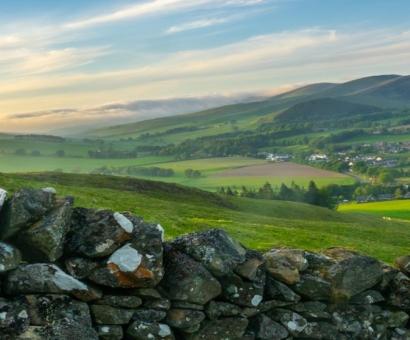Motivators & Behaviours in Land
Investment into Land: Key Motivators and Behaviours of Scottish Landowners
This report forms part of our work concerning decision-making around investment into land. It follows on from Rural Land Values, Sales and Investment Trends, A Rapid Evidence Assessment of Investment Decision-making for Land and Assessing Land Use Change: International Evidence.
We are interested in the decision-making processes, behaviours and motivations of landowners or land managers, particularly around their future land use decisions and investment strategies into their land.
What did we do?
We interviewed landowners and land managers in four case study areas across Scotland - River catchment of Spey and Tweed, Shetland Islands and Galloway and South Ayrshire Biosphere Reserve. We asked them about the land they manage and explored decision-making and motivations at various stages of their ownership or management. We also looked to the future and asked what they were planning, and if funds were required to reach their future land use goals.
What did we learn?
The results in this report are our first analysis of the data, with further reports due in later years of the project. From this initial analysis we sought to identify key decision-making structures (primarily individual or group decision-making processes). We then created a set of personas, identifying key motivations or behaviours of each group.
In order to develop this set of personas, we first categorised decision-making processes as either individual (sometimes as a family unit) or as a group. Within group decision-making multiple different ownership groups were identified including companies, institutions, private trusts, the public sector, third sector organisations and charitable trusts, community owned land and elements of crofting (common grazing). The role of contracted land managers were included into the typology and included two groups: Land managers managing multiple sites and experts/ specialists.
The typology of personas consists of 5 groups according to their main motivations and behaviours:
Group 1: Financial gain through development/ land use change. This group were primarily motivated by maximising the income their land could generate and included the following subgroups: Natural capital buyers, commercially focused estates, developers, energy producers/storers, commercial foresters and investors.
Group 2: Self-serving motivations. This group were less motivated with maximising income streams and instead had diverse reasons for owning land, but primarily to serve a purpose personal to their interests, for example philanthropic environmentalists, family run estates (custodians), private amenity/ leisure ownership, crofting as an identity/ culture.
Group 3: Food producers. This group of farmers are motivated to maintain the main activity of their business, which is producing food (and sometimes other goods). This is a broad group with many different behaviours.
Group 4: Public (environment) goals. This is land that is managed primarily to produce public goods (not for profit), whether this be nature conservation, clean air, flood defenses etc. The two sub-groups identified were: managed for conservation or scientific purposes and public amenity.
Group 5: Locally defined goals. There was also a set of owners/ managers who were mainly motivated by local level factors and included a lot of community owned land. Two sub-groups are: land for social gains and maintaining community.
What do we recommend and what happens next?
We aimed to interview the widest range of different landowners as possible to reflect the diverse nature of landownership in Scotland, including individual private owners, tenants, crofters, public organisations, community-owned land, businesses, institutions and natural capital investors. However, drawing generalisations amongst and between these groups was still difficult.
The personas are a useful tool for policy-makers to understand the different dynamics within the landowners of Scotland. However, it is important to acknowledge that these generalisations should not entirely overshadow the nuance and diversity of behaviours and motivations at a granular or individual level, largely determined by the land itself or the personal beliefs/ values/ opinions of an individual.
Read the report in full through the link below.










